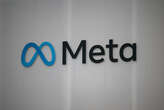Less than three weeks into his second term, President Trump has made it clear that his yearslong attack on diversity, equity, and inclusion is a core priority for his administration. Across a slew of executive orders, Trump has set his sights on dismantling DEI initiatives in the federal government and military—but he has also gone a step further and targeted the private sector.
Trump has revoked a critical executive order dating back to 1965, which addressed discriminatory hiring practices across federal contractors and was critical to promoting racial equity; in the same executive action, he also directed federal agencies to open investigations into private sector companies to snuff out DEI programs that “constitute illegal discrimination or preferences.”
All this comes nearly two years after the Supreme Court ruling on affirmative action sparked a wave of lawsuits from conservative activists, who have taken aim at DEI efforts across the public sector and private companies—leading some major employers to alter or roll back parts of their diversity programs. Several companies, among them Walmart and McDonald’s, have made notable changes to their DEI goals and stopped participating in the Human Rights Campaign’s annual survey that measures workplace inclusion for LGBTQ+ employees, while Meta will no longer have a dedicated DEI team.
But the wave of executive orders Trump has issued since taking office could pose a new threat to corporate DEI, whether or not they hold up to legal scrutiny. Employment lawyers like Aaron Goldstein worry that the vague language of Trump’s executive order targeting the private sector will push companies to take an extreme position on DEI. “We don’t know what the Trump administration is necessarily going to be going after, and we don’t really know what the consequences are,” he says. “When the government doesn’t tell you precisely what you can or cannot do, or the consequences for doing it, it makes rational people run for the hills.”
The executive orders have sparked “chaos and panic” among corporate leaders, according to Kenji Yoshino, though he points out that Trump has limited legal authority over DEI work in the private sector. “He can put the muscle of the executive branch behind lawsuits targeting the private sector for illegal activity, but what is ‘illegal’ is not going to depend on standards set by him,” says Yoshino, a constitutional lawyer and the director of the Meltzer Center for Diversity, Inclusion, and Belonging at NYU Law. “Ultimately, these cases filed against the private sector are going to be resolved in the federal courts, according to federal statutes.”
The bigger question, Yoshino says, is whether companies will feel even greater social pressure to retreat on DEI issues that they might view as controversial or under attack by the Trump administration, like gender identity and trans rights. “There’s no law that says you can’t participate in a survey,” he adds, citing the Corporate Equality Index, HRC’s annual survey. “But if [employers] lean out from social issues too much, then they’ll get hit from the left and their own employees saying: ‘We thought you were committed to diversity, equity, and inclusion. You said that a million times. Why are you backtracking so quickly at the first sign of resistance?’”
How companies are reacting to the executive orders
Some experts in the DEI space argue that many corporate leaders are unlikely to entirely cut diversity work, despite the public statements companies have made in the last year that signal a wavering commitment to corporate DEI. “Most companies with sophisticated internal legal teams aren’t that concerned because they have already been looking at and evaluating their practices even before Trump took office,” says Joelle Emerson, the cofounder and CEO of culture and inclusion platform Paradigm. “Now that doesn’t mean the administration might not seek to create a lot of distraction [with] attacks on companies, even though ultimately the investigation might be frivolous. I do think high-profile companies may have some concerns about that.”
In fact, Emerson believes that some of the changes companies have been making to their diversity programs—both since affirmative action was overturned and more recently, in light of Trump’s anti-DEI efforts—are not nearly as extreme as they might appear on the surface. In certain cases, the changes could even be a corrective to some of the more hollow commitments companies had made in response to public pressure during the pandemic; some of the employers that have pulled back on DEI may never have been genuinely invested in advancing those efforts.
When looking closely at 15 statements put forth by companies that have seemingly rolled back DEI programs over the last year, Yoshino and his team concluded that only one employer—Tractor Supply—had effectively disavowed all diversity efforts. “The other 14 companies were saying, ‘We of course still believe in inclusion and belonging; we’re just retreating from these policies,'” Yoshino said, describing the response from companies as a “performance of retreat.”
As for how corporate leaders should proceed, given the threat of legal action, many DEI experts are urging companies not to make rash decisions about the future of their diversity work. “I think the orders are designed to have a chilling effect and get companies to stop doing way more things than the law actually requires them to stop doing,” Emerson says. “And that’s what I worry about. I just keep encouraging companies to read the executive orders carefully and not over comply.” Employers don’t need to eliminate employee resource groups, for example, or stop conducting pay equity audits, she says.
Alvin Tillery, a professor at Northwestern University and founder of the consulting firm 2040 Strategy Group, has counseled many employers to “hold tight and wait until you’re sued.” If companies overcorrect or take extreme measures to protect against the Trump administration’s scrutiny, they could also risk inviting more traditional discrimination claims. (In a new regulatory filing, Pinterest actually cited the attacks on DEI as a potential business risk, noting that if its diversity programs are “perceived as insufficient or overdone,” the company might struggle to attract talent or face legal action.)
“What’s funny is when most of these companies started to do DEI work, they found it [was] actually helping the bottom line,” Tillery says. “Lawsuits go down. The workers like us better. So those folks that are standing pat are either smart enough to see that it helps their business, or they’re worried about some further regulatory shifts coming down the pike for other parts of their business.”
What companies can do to continue DEI work
Even amid conservative backlash and the threat of legal action, corporate DEI remains popular. In surveys conducted by the Pew Research Center, support for these programs fell between 2023 and 2024—but more than half of respondents still said they believed DEI was largely a force for good. Tillery points out that a lot of workers appreciate DEI programs, including white employees. “When I go in to consult with a company, most of the white male managers say, ‘thank God you’re here. Please teach me how to not insult anyone,’” he says. “They want guidance to not do harm to other people.”
At companies that remain committed to DEI work, Emerson recommends leaders take a hard look at any initiatives that are costly or need to be retired, such as training programs that use outdated language. Yoshino and his team at the Meltzer Center help companies do a risk analysis of their DEI programs, which involves looking at whether the initiative gives preferential treatment to a protected group that translates to a “palpable benefit.” The programs that tend to be most risky are fellowships or other initiatives that exclusively cater to a specific group—such as women or people of color—which is why a number of companies have opened up those programs to all applicants in recent years.
Sometimes, however, a program might carry greater legal risks but also benefit a company significantly, which is why Yoshino says it’s important to analyze DEI efforts on an individual basis before scrapping them altogether. “One of the benefits of these risk audits that we’re doing with companies is that they help them identify programs where they’re willing to tolerate some risk,” Yoshino says. “You need to chart that risk against the impact of the program to see your risk tolerance for each program—not for DEI overall.”
In 2020, many employers made grand gestures and public proclamations in support of DEI, which drew a lot of attention but may not have yielded tangible results; those types of “performative” actions can also prove riskier, according to Emerson. Some companies may shift away from representation goals, which many tech giants embraced a decade ago when they first started publishing diversity reports. “So many company efforts have been focused on representation, which I think is really important,” she says. “But we often would see companies focus on representation but not talk about the gaps that were leading to those representation outcomes.”
In some cases, companies seem to be folding DEI work into other departments. But it could also make sense to expand the remit of teams that were previously structured to focus on DEI, since diversity practices intersect with so many other parts of the business and should be incorporated across the company. “If you see that there’s no longer a DEI title at this company, I think that could be bad news,” Emerson says. “Or it could be that the company is actually very strategically embedding some of this expertise in ways that are going to have more impact on the business.”
For some employers, moving away from the acronym DEI—which has become a loaded term and easy target for right-wing conservatives—might seem like the right call. But it’s also important that leaders find a way to effectively communicate these types of changes to their DEI programs, so employees don’t feel like their company has entirely abandoned its commitments to diversity.
“Right now, companies are really looking for a way to signal to their employees: ‘We care about you,’” Emerson says. “‘Our values have not changed. We want our workplace to be fair. We want hard work to predict your success, not identity. We want you to feel a sense of belonging here—and to thread the needle and not expose [ourselves] to unnecessary risk.’”







No comments